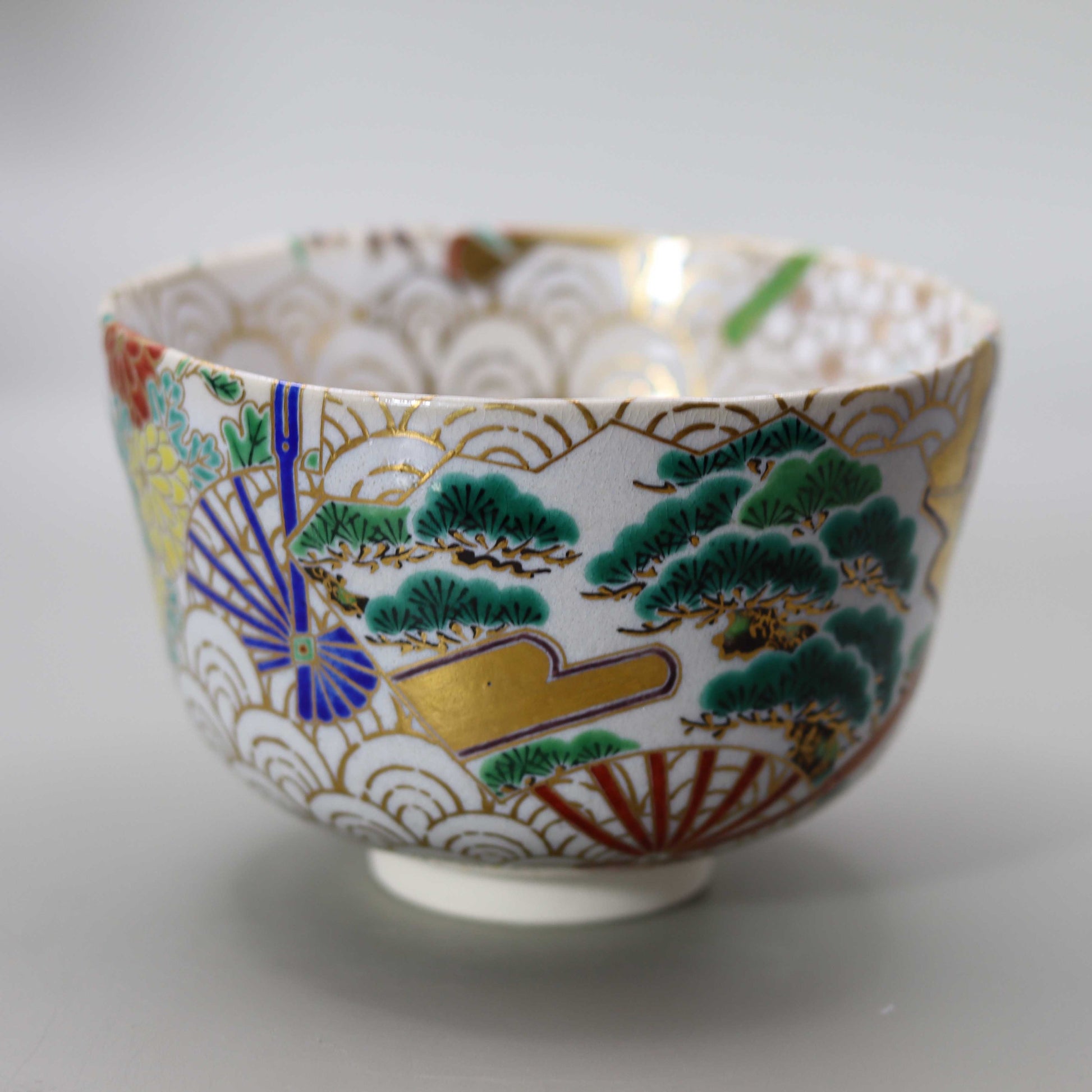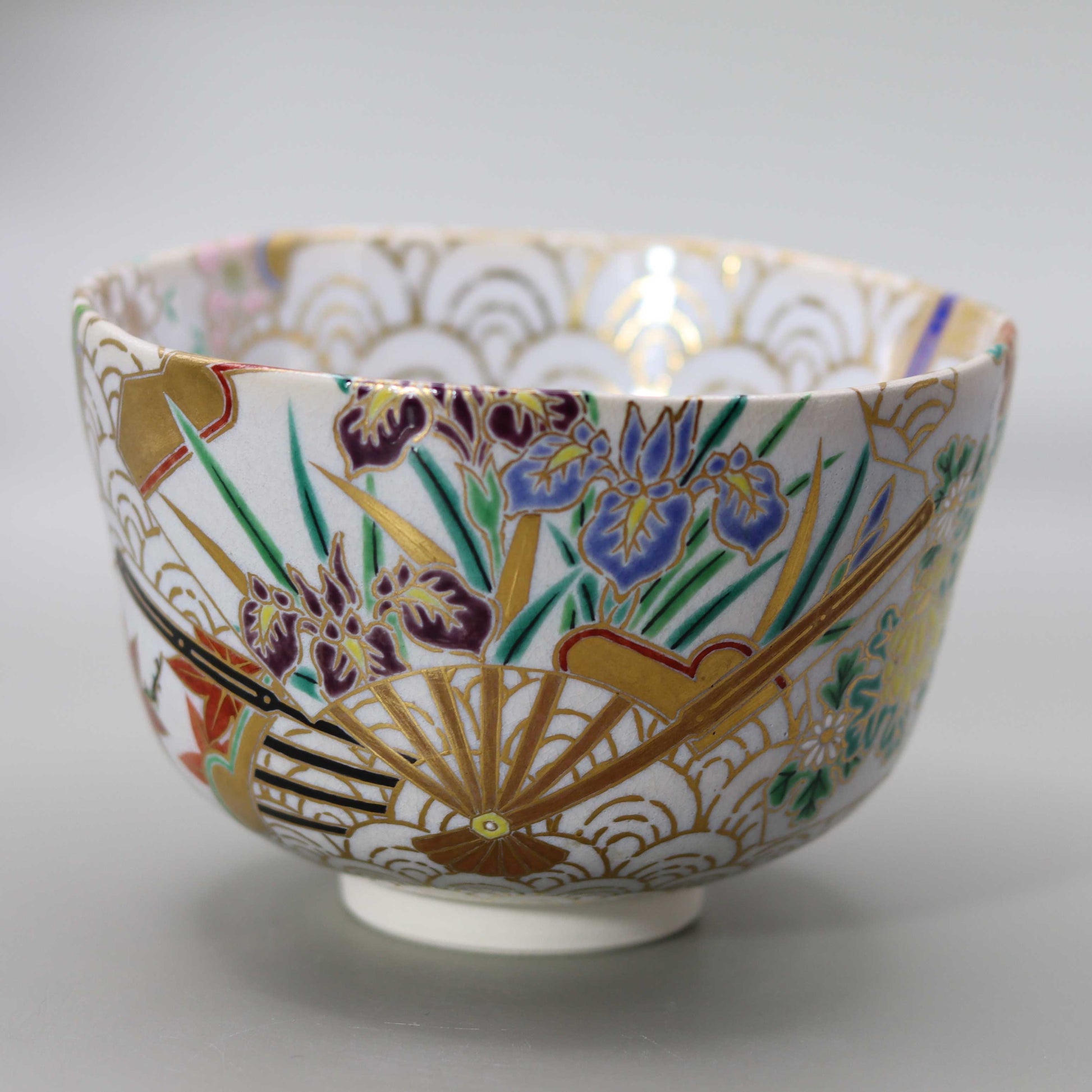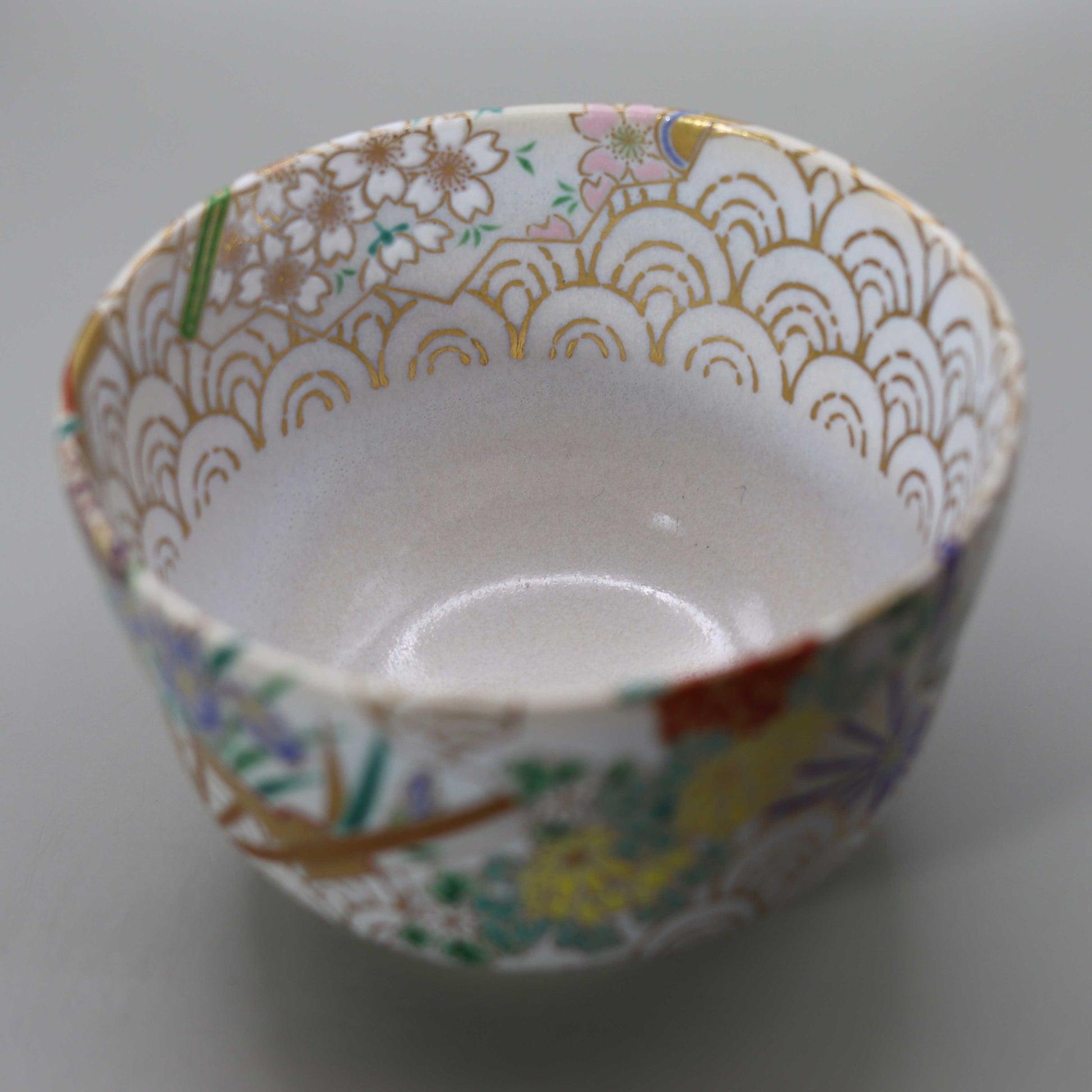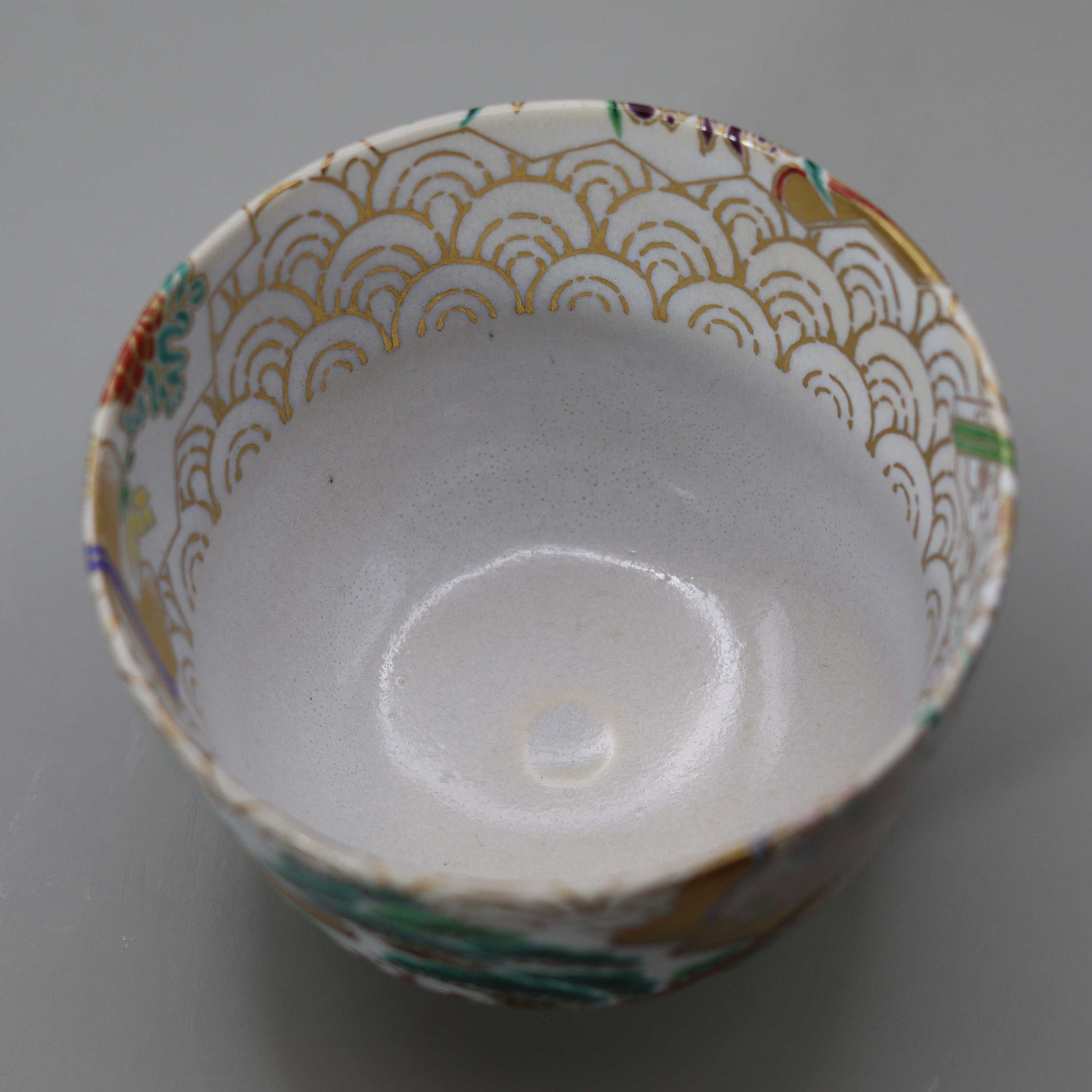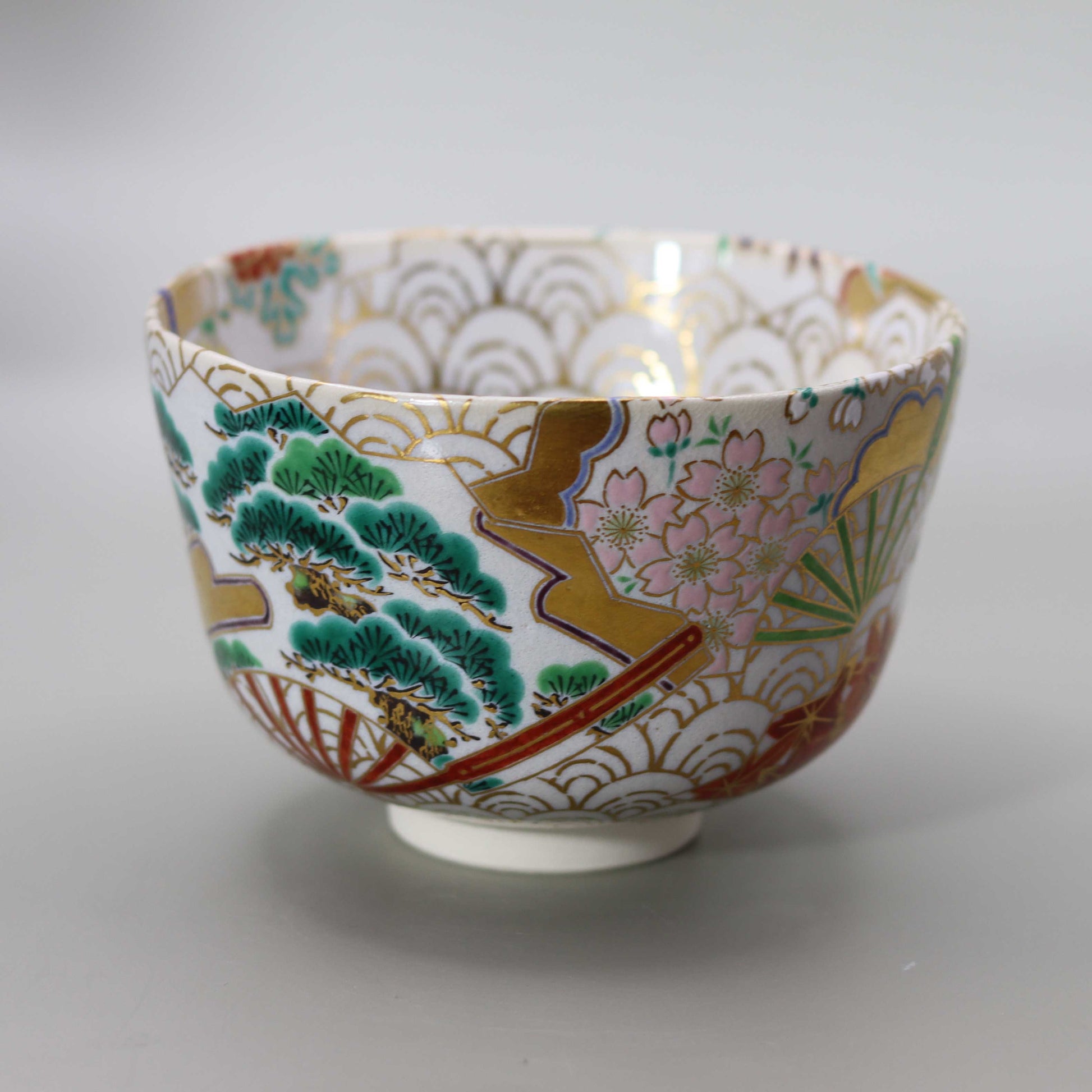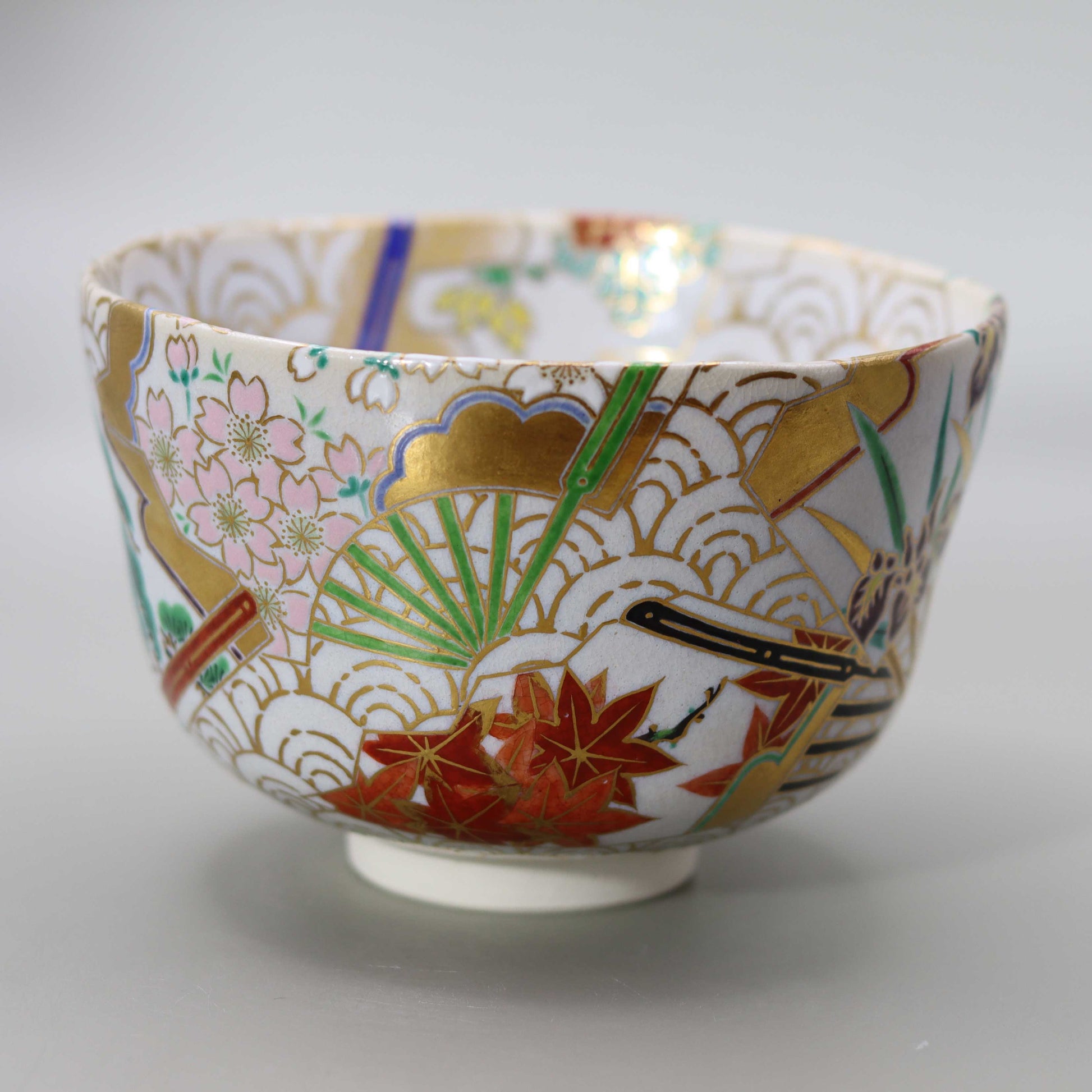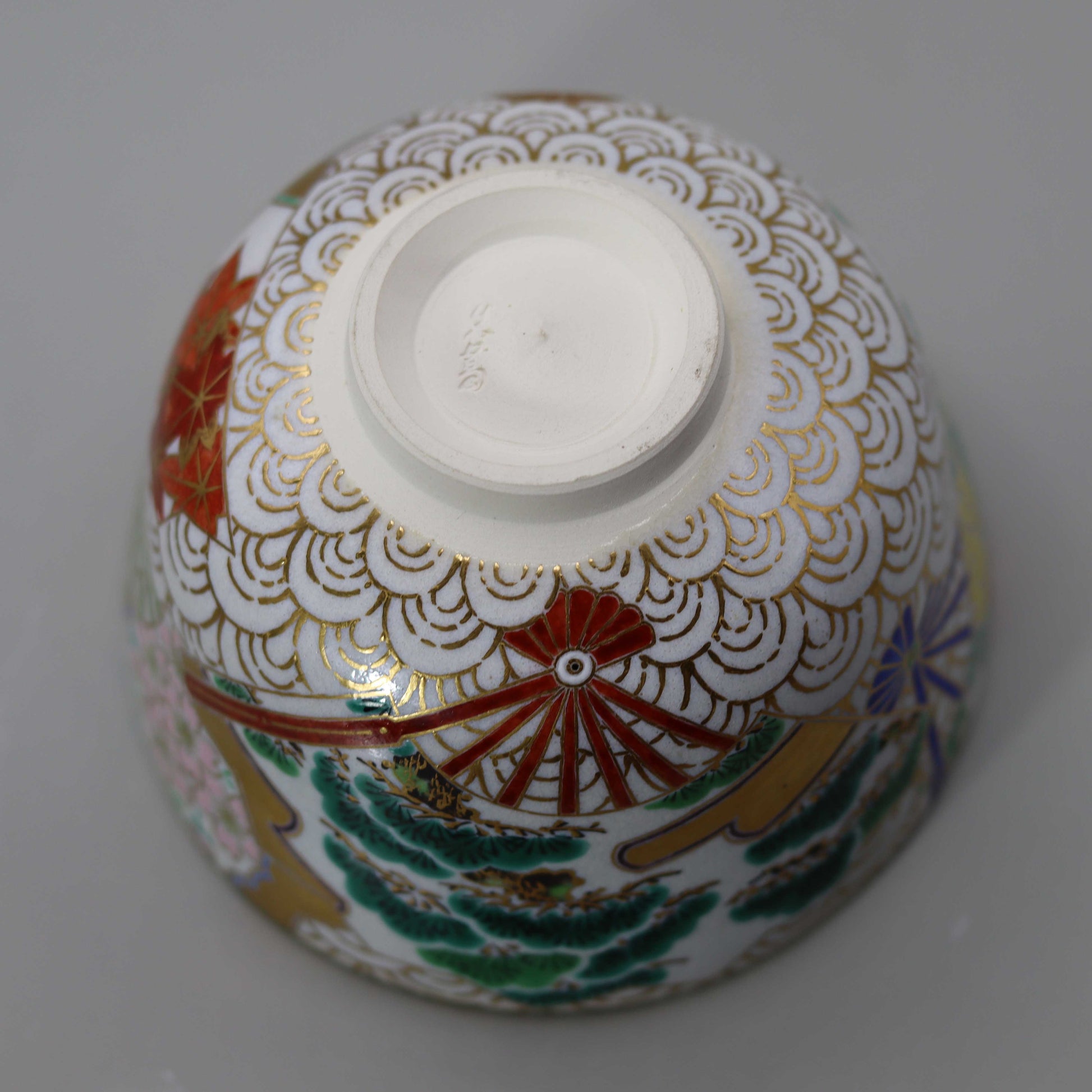Straw ash glaze seasonal flowers fan surface scattered tsunami tea bowl by Kosai Miyagawa
Straw ash glaze seasonal flowers fan surface scattered tsunami tea bowl by Kosai Miyagawa
Couldn't load pickup availability
Height: 8.0cm Width: 12.0cm
"Straw ash glazed tea bowl with seasonal flowers and a fan surface and a blue ocean wave pattern, Miyagawa Kosai" is a work that encapsulates traditional Japanese beauty. The surface of the tea bowl is exquisitely harmonized with seasonal flowers, a fan surface, and a blue ocean wave pattern that has been used as an auspicious motif since ancient times. This tea bowl, with its delicately painted motifs, is a piece that symbolizes the Japanese culture of appreciating the changing of the seasons in the tea ceremony. This tea bowl, made by Miyagawa Kosai, is a work that crystallizes the techniques and aesthetic sense of the Miyagawa family that have been passed down for generations. In this article, we will take a detailed look at traditional Japanese beauty and the history of the Miyagawa family, focusing on the seasonal flowers, fan surface, blue ocean wave pattern, and straw ash glaze that are embodied in this tea bowl.
Seasonal Flowers and Fans - Designs that Reflect the Beauty of the Seasons
In the design of this tea bowl, the first thing that catches your eye is the flowers of the four seasons and the fan surface. In Japan, the four seasons are a natural change that has been cherished since ancient times, and in the tea ceremony, it is important to feel each season. The flowers depicted on this tea bowl are representative of spring, summer, autumn and winter, and are arranged in a balanced manner, vividly expressing the colors of each season. The combination of flowers, such as cherry blossoms in spring, bush clover in summer, autumn leaves in autumn, and plum blossoms in winter, highlights the beauty of the four seasons. In particular, the motif of the fan surface enhances the elegance of this work. The fan has an auspicious shape called "widening at the end," and has been popular in Japan as a lucky motif since ancient times. In this tea bowl, the fan is depicted as dancing in the wind along with the flowers, giving the viewer a sense of light movement. The design of the fan pattern as if it is dancing down from the sky gives the tea bowl elegance and dignity. In addition, the blurring technique and gold paint are effectively applied, creating a visual effect in which the pattern on the fan surface appears three-dimensional. This gives the entire bowl a dynamic design, and from any angle it feels like a beautiful landscape. The flowers scattered across the fan surface each have a deep meaning. For example, cherry blossoms symbolize the arrival of joy, while pine needles and small flowers represent longevity and prosperity. These motifs depicted on the surface of the bowl are not just beautiful, but also overlap with auspicious meanings, giving the bowl the power to bring good fortune and good luck to the user.
Seigaiha pattern - an auspicious pattern that symbolizes peace and eternity
"Seigaiha" is one of the most representative traditional patterns of Japan, and its beauty is incorporated into this tea bowl. Seigaiha is a pattern of concentric circles drawn repeatedly like waves, and its spreading nature symbolizes "eternal peace." The endless waves have been loved since ancient times as a symbol of eternal happiness and a peaceful life. Seigaiha also has the meaning of warding off evil. Waves symbolize the purifying power of water, and are considered to be an auspicious pattern that avoids disasters because of the idea that they wash away evil. The Seigaiha pattern on the tea bowl brings peace and prosperity to the user, and also symbolizes a bright outlook for the future. Seigaiha originated in ancient Persia and is said to have been introduced to Japan via the Silk Road. It has a deep history, and even after a long time, it continues to be loved in many fields. In Japan, it is also derived from the Gagaku dance "Seigaiha," and was used in the costumes of dancers during the Edo period. The Seigaiha pattern, which has these historical backgrounds, is painted on the surface of this tea bowl, giving it a deeper meaning that goes beyond mere decoration.
Miyagawa Kosai's Straw Ash Glaze - A Fusion of Traditional Technique and Modern Beauty
The straw ash glaze is a special technique that the Miyagawa Kosai family takes pride in, and is used generously in this tea bowl. The straw ash glaze is a soft, warm, milky white glaze with a bluish tint that gives the bowl a unique texture. This glaze, which has been carefully passed down by successive heads of the Makuzu family, is not just a technique, but symbolizes the Miyagawa family's ceramic philosophy itself. The straw ash glaze was originally used by Nonomura Ninsei, the founder of Kyo-yaki, but the Miyagawa family is particularly skilled in using this glaze, and it is a technique that has been honed over the years. This glaze shows subtle changes depending on the quality of the clay and the firing conditions, sometimes taking on a reddish hue or a bluish-white hue, and has an appeal that never tires of the viewer. The thickness of the straw ash glaze also gives the tea bowl a plump, elegant impression. When you pick it up, you can feel its soft texture and warmth, and its true value is not only appreciated but also revealed when you actually use it. This glazing technique, which has been preserved by the Miyagawa family for generations, is a symbol of Makuzu ware, and it gives the tea bowls elegance and depth.
The history of Makuzu ware and the traditions of the Miyagawa Kosai family
The history of Makkuzu ware spans more than 330 years. Its beginnings date back to the Jokyo era (1684-1687), when Yukan Miyagawa Kobee Masakazu opened a kiln in front of the Chion-in Temple in Kyoto. For generations, the Miyagawa family has protected the traditions of Kyoto ware while incorporating new techniques to keep up with the times, and has always continued to evolve. In particular, the fifth master craftsman, Miyagawa Chozo, opened a kiln in Makkugahara (now Maruyama Park), which made Makkuzu ware widely known. The Miyagawa family continued to hone their techniques, and their fourth son, Toranosuke, who moved to Yokohama, further developed Makkuzu ware as the first Makkuzu Kozan. Meanwhile, the Jihei family, a direct descendant of Yukan, also called themselves the first Miyagawa Kosai, and has focused on producing tea utensils and sencha tea utensils. The current seventh Miyagawa Kosai is pursuing new expressions of beauty appropriate to the modern era while protecting the long history of Makkuzu ware. Their works are highly acclaimed both in Japan and overseas, and are in the collections of many prestigious art museums, including the Victoria & Albert Museum (London) and the Permanent Mission of Japan to UNESCO (Paris). The Makuzu ware made by the Miyagawa family is supported by many tea ceremony practitioners and enthusiasts today as a perfect blend of traditional Japanese beauty and modern sensibility. This piece is extremely beautiful, combining flowers that represent the changing of the seasons, auspicious fan surfaces, and blue ocean waves that symbolize eternal peace. These patterns are not just decorative, but each has a deep meaning and brings good fortune to the entire tea bowl. In addition, the straw ash glaze, a traditional technique of the Miyagawa Kosai family, gives the tea bowl a unique warmth and dignity, making it a piece that fits comfortably in the hand of the user. This tea bowl, which is a condensation of the Miyagawa family's long history and outstanding techniques, plays an important role in the tea ceremony, allowing people to feel the natural beauty and good fortune of Japan.
Share
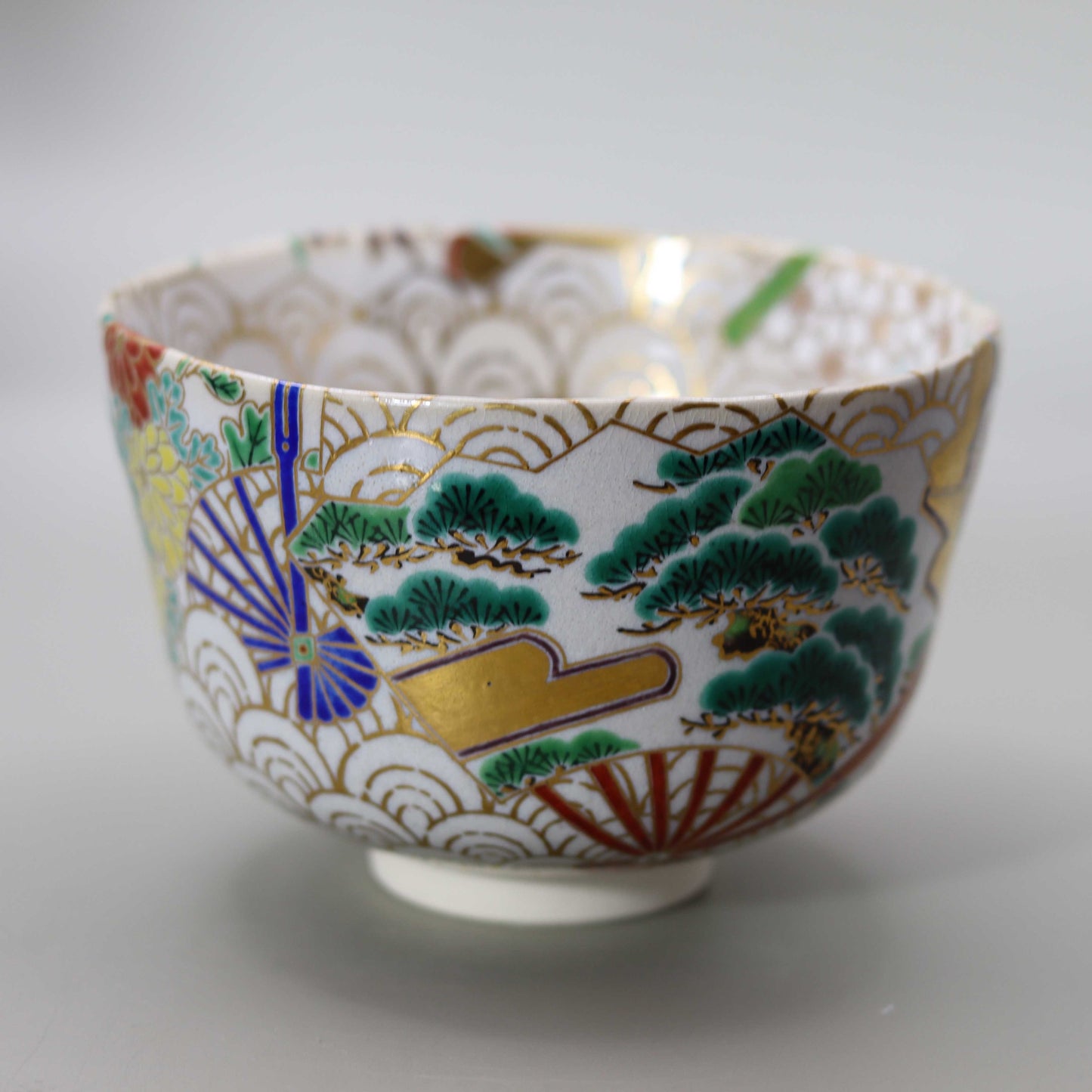
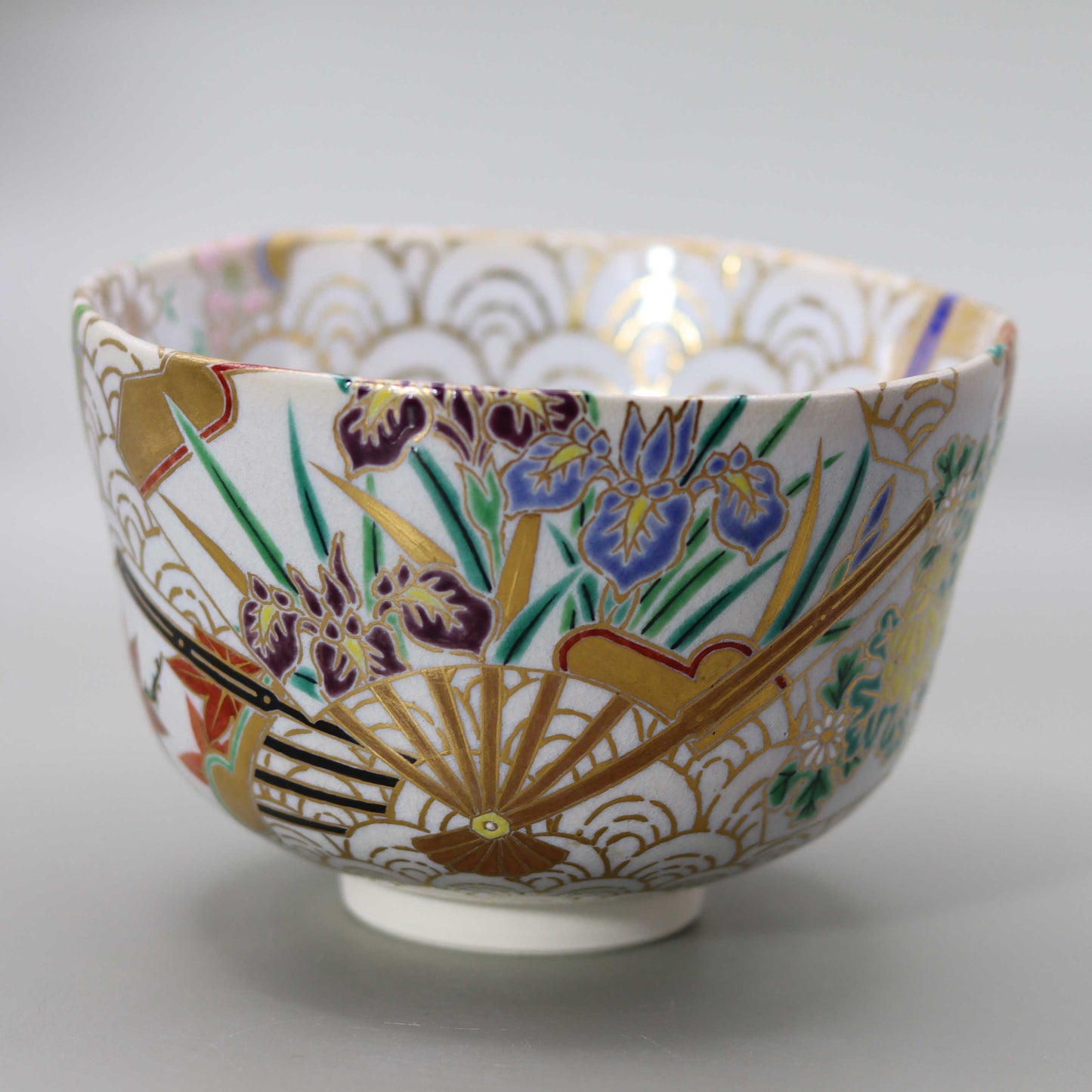
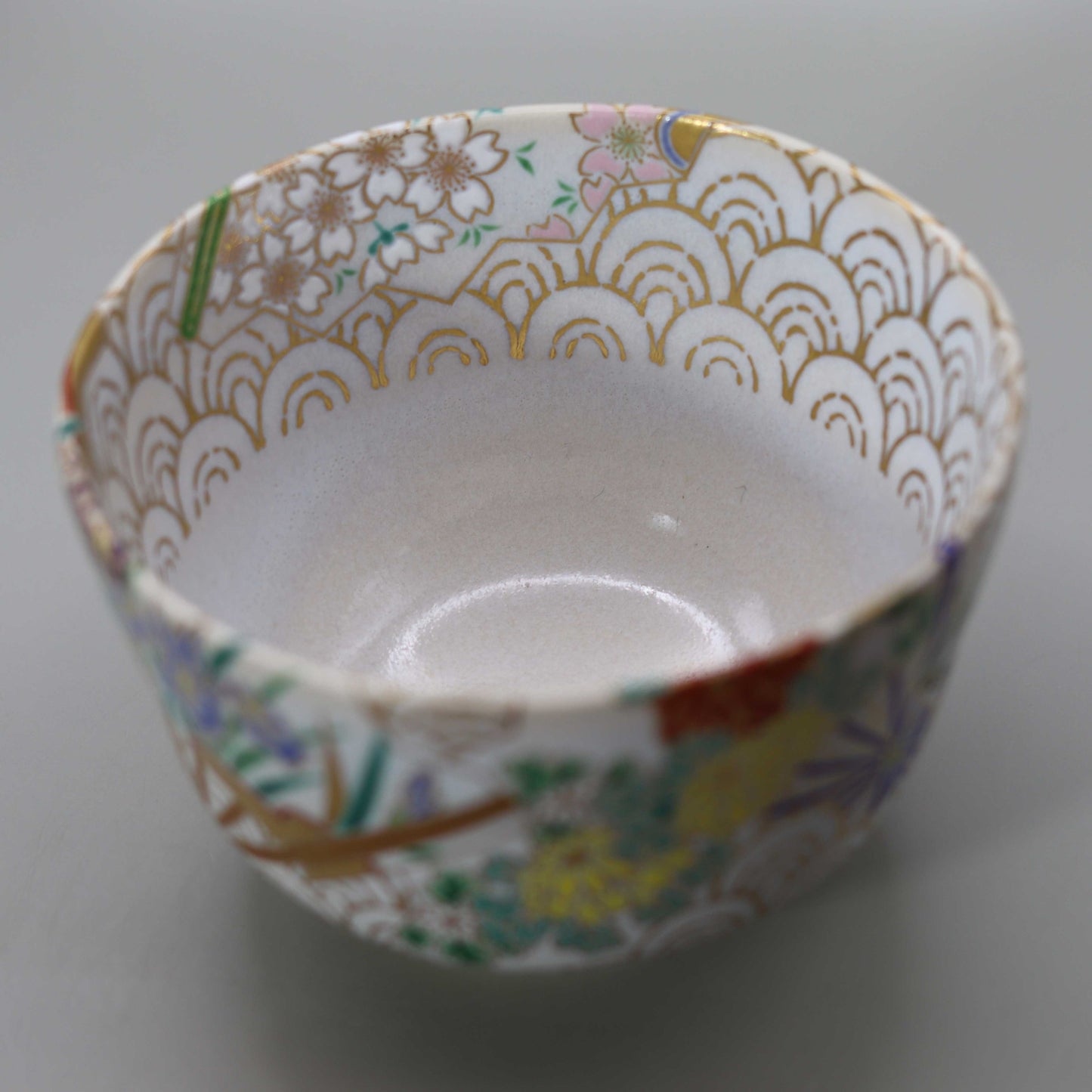

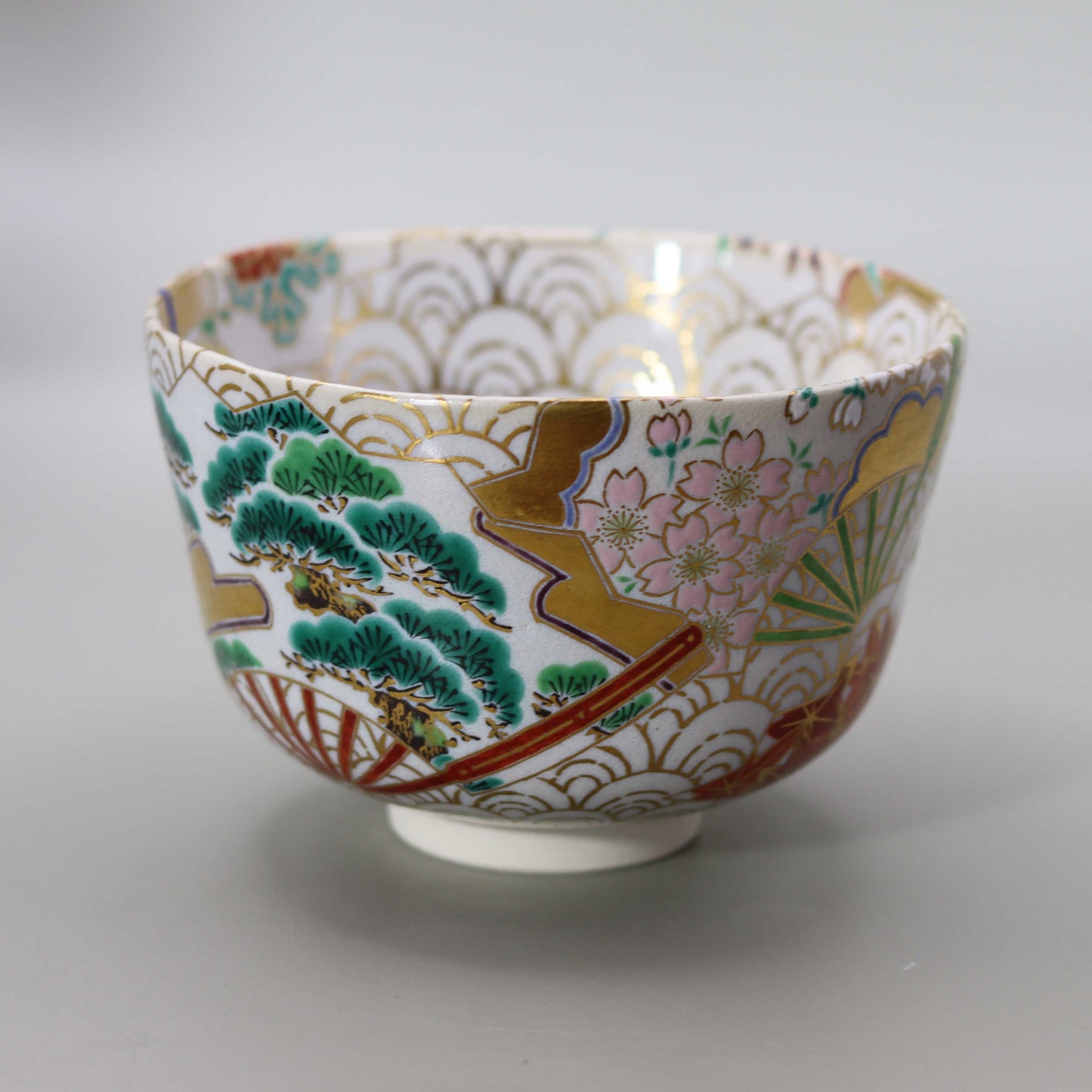


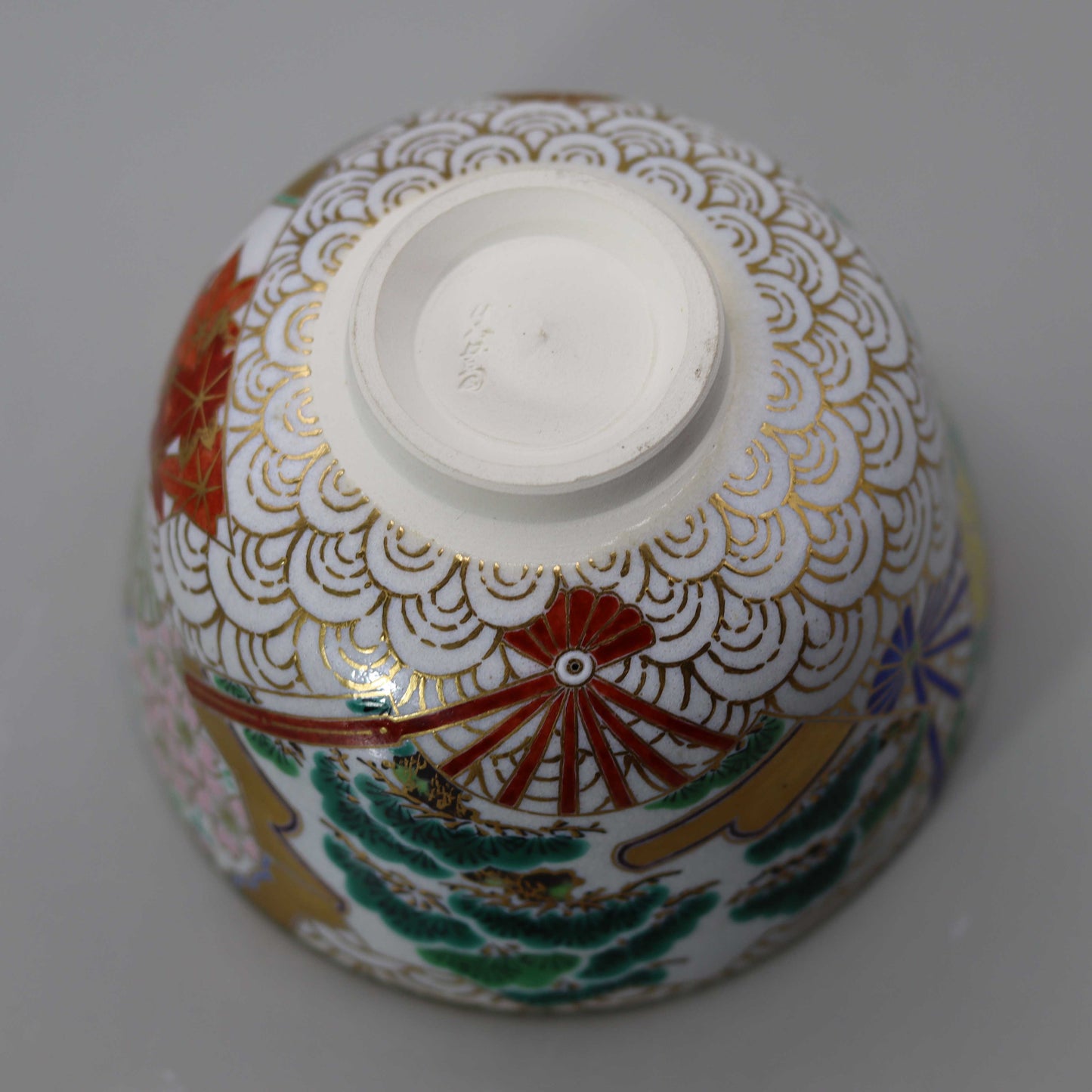
Multi-Column
-
[I will send it to you quickly and carefully]
We carefully package each product in a way that suits it best.
Also, delivery times vary depending on the piece (vessel, etc.).
Items that already come with a box will be shipped within 1-3 days of the order date.
For items that require a box to be made after your order, it will take approximately 30 days for production to be completed and then shipped.
In either case, once we have confirmed your order, we will contact you by email to inform you of the delivery date.
-
[Requests when purchasing pottery]
Even products that look the same may differ slightly in color, shape, size, etc.
The way the glaze is used, the power of the kiln, the firing method, the season, and the humidity also affect the appearance of the pottery.
Please understand the individuality of each piece of pottery and enjoy the unique warmth of handmade.

